Southerners love, and I do mean LOVE, air conditioning. When a heatstorm, a term that only became part of the meteorological jargon in the mid-1960s and describes a few days of over 100 degree weather, rolls through the air conditioner becomes more sacred than God. Frank Trippet, one time editor at Newsweek, noted “. . . people no longer think of interior coolness as an amenity, [Southerners] consider it a necessity, almost a birthright, like suffrage.” Governor Richard W. Riley of South Carolina demanded during the 1980 National Governor’s Conference that Federal assistance programs should operate under the assumption that air-conditioning a home in the South is no less essential than heating a home in the North. In 1963, the journalist Pat Watters called the air conditioner the “unsunghero” of the South. When and how did the Southerner’s reliance on AC take root and how has AC nourished and pruned our culture?
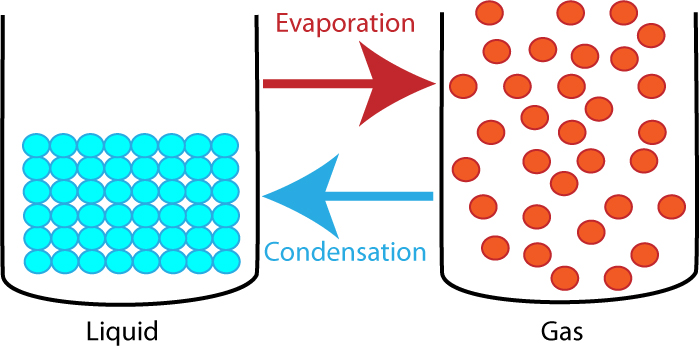
Let’s take a step back and start with how an air conditioner works. The key is a refrigerant that can pass between liquid and gas. Keep in mind that the chemical in it its liquid phase is low energy and cold; the molecules are moving around very sluggishly. Just like any Southerner in cold weather. With heat, the molecules start moving around faster and become a gas. We can use this transition from liquid to gas caused by the intake of heat to stop us from sweating indoors. Inside the house where we want it cool, we give heat to the liquid to transform it into a gas. Outside, where we want the heat to go, we transform the gas back into a liquid and rid it of the excess heat. We then bring the cool liquid back inside the house to start the process all over again.
An AC unit has three basic parts: a compressor and a condenser located outside and an evaporator located inside. At the evaporator, the refrigerant is a cool liquid and passes though a tiny narrow hole causing the liquid’s pressure to drop. This pressure drop leads to evaporation, the aforementioned transition from liquid to gas. This phase shift picks up heat or thermal energy. The evaporator has metal fins to help in this exchange. The gas leaves the evaporator still somewhat cool and at low pressure. The compressor outside, as the name suggests, compresses the gas leaving your home into a hot, high-pressure gas. This flows into the condenser, that part outside that has fins and looks like a radiator. Here, the hot gas is cooled and turned back into the high-pressure liquid to pass back inside the house to start the process again.
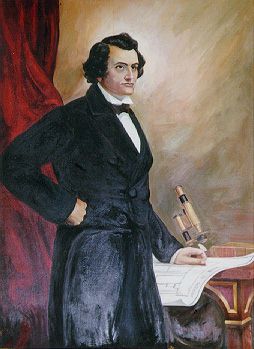
You can thank John Gorrie for the air conditioner. Gorrie was a Florida doctor who, in trying to lower the body temperature of patients suffering from malaria and yellow fever, experimented with cooling rooms. He patented a steam-powered compressor that could make ice in 1951. This caused a Yankee journalist to scoff, “A crank down in Florida thinks he can make ice as good as Almighty God.” I would argue over a century and half later, enjoying my 65 degree room and ice in my bourbon in the middle of a North Carolina summer, good ol’ John deserves a spot right next to God.
By the late 1860’s, refrigerated train cars revolutionized the meat packing industry. Twenty years later President Garfield used fans and 436 pounds of ice per hour to cool his bedroom in the White House. But cooling a home or room was simply too impractical and expensive for even the wealthiest and in 1882 another invention overshadowed air conditioning—the electric fan. As the historian and inspiration for this article Raymond Arsenault noted, “Ownership of an electric fan quickly became a badge of middleclass respectability in the urban South.” Jefferson Davis, the 20th Governor of the great state of Arkansas from 1901 to 1907 fended off the attack of an opponent who pointed out Davis’s ownership of, “a whirligig fan at the state’s expense, to fan himself with, not being content to use a palm leaf like ordinary people.” This was problematic for Davis as he himself used his silver tongue to exploit the frustration of poor rural whites blaming city-dwellers, blacks and Yankees for problems on the farm.
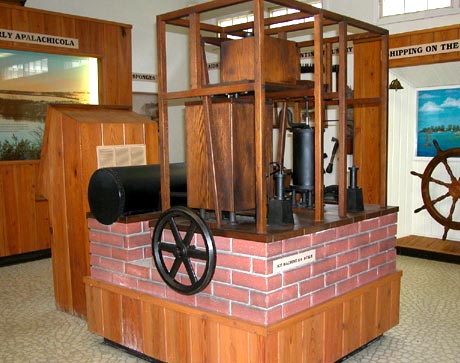
Shockingly perhaps, the first air conditioning system in 1902 was not installed in the South but rather the Sackett-Wilhelms Lithographic and Publishing Company in Brooklyn. That system was invented by a young Cornell-trained engineer—Willis Haviland Carrier and thus began the Carrier Corporation a $12.5 billion company with 43,000 employees. But although the North can claim firsts, growth of AC took place in the South thanks to Southern boys from Charlotte, North Carolina—Stuart Cramer and I.H. Hardeman. Cramer himself actually coined the term “air conditioning” in 1906. Hardeman, working under Carrier, convinced his boss that the textile industry should be targeted. The extreme heat generated on spindles on textiles machines caused fibers to dry out, become brittle, and break. By 1908, most mills in North Carolina had air conditioning. And in 1909, another big industry in North Carolina—tobacco—was using air conditioning to control the moisture of tobacco during curing. Within industry is where air conditioning stayed until the 1920’s, but then movie theaters stole the show.

The Empire Theater in Montgomery Alabama is an important icon in Southern culture for many different reasons. Just in front of the Empire Theatre is where Rosa Parks refused to give up her seat on the bus to a white passenger. It was also the first venue Hank Williams, Sr. performed in. In 1917, the Empire Theater was also one of the first venues to installair conditioning. By 1924, the Palace Theater in Dallas and the Texan and Iris theaters in Houston also had installed air conditioning. This drew in large crowds to enjoy the “cool and clear” weather inside the movie houses. Theaters up to this point had largely closed during the hottest summer months. By the outbreak of World War II it would’ve been tough to find a theatre without AC.
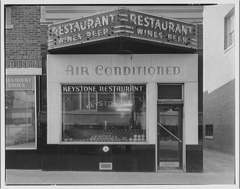 But AC was slower to catch on in other businesses and homes. In 1934, in Richmond, Virginia the first air conditioning was installed in a Southern department store. Most retail stores in smaller towns didn’t see AC until the 1960’s. In 1948 air conditioning was installed in three Louisiana schools, “as a national experiment to find out how much it benefits school children.” But despite its success providing an atmosphere where students could actually concentrate, public schools were very late to receive cool indoor temperatures. Both my wife and I attended Arkansas public schools in the late 80’s and early 90’s that did not have AC.
But AC was slower to catch on in other businesses and homes. In 1934, in Richmond, Virginia the first air conditioning was installed in a Southern department store. Most retail stores in smaller towns didn’t see AC until the 1960’s. In 1948 air conditioning was installed in three Louisiana schools, “as a national experiment to find out how much it benefits school children.” But despite its success providing an atmosphere where students could actually concentrate, public schools were very late to receive cool indoor temperatures. Both my wife and I attended Arkansas public schools in the late 80’s and early 90’s that did not have AC.
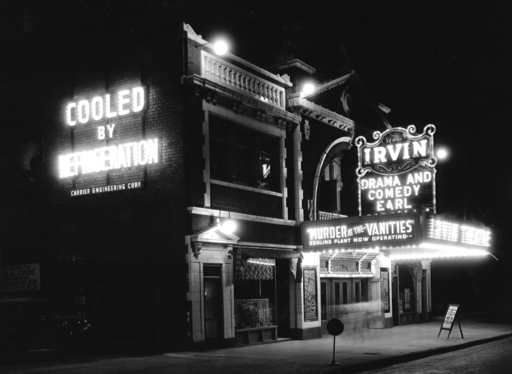 And despite the prevalence of AC at the movies at the beginning of World War II, only the wealthiest Southerners had AC at their homes. This all changed in 1951 with the arrival of the inexpensive, efficient window AC unit. As Aresnault writes in his treatment of air conditioner and southern culture, “By 1955 one out of every twenty-two American homes had some form of air conditioning. In the South the figures were closer to one in ten… In 1966 Texas became the first state to have more than half of all its homes and apartments air conditioned, but by the end of the decade half of the homes and apartments in the South were air-conditioned.” In 1955 less than 10% of Southern cars had AC but by 1973 the figure was 80 percent.
And despite the prevalence of AC at the movies at the beginning of World War II, only the wealthiest Southerners had AC at their homes. This all changed in 1951 with the arrival of the inexpensive, efficient window AC unit. As Aresnault writes in his treatment of air conditioner and southern culture, “By 1955 one out of every twenty-two American homes had some form of air conditioning. In the South the figures were closer to one in ten… In 1966 Texas became the first state to have more than half of all its homes and apartments air conditioned, but by the end of the decade half of the homes and apartments in the South were air-conditioned.” In 1955 less than 10% of Southern cars had AC but by 1973 the figure was 80 percent.
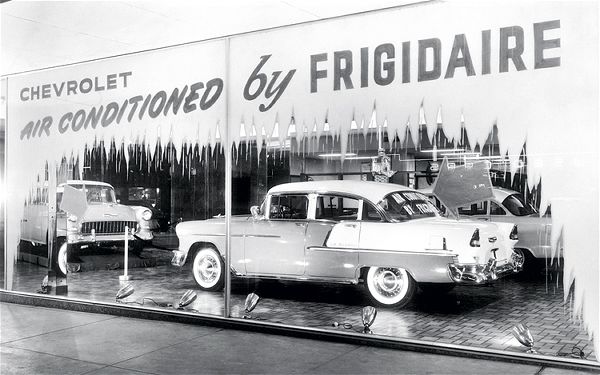 Today it is hard to image the South without AC.
Today it is hard to image the South without AC.
Arsenault, R. 1984. “The End of the Long Hot Summer: the Air Conditioner and Southern Culture.” The Journal of Southern History. doi:10.2307/2208474.
On to Part II: Some Like It Cool: The Impact of AC on the South
